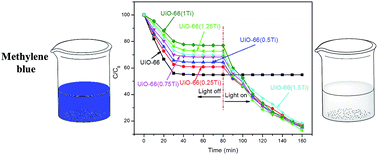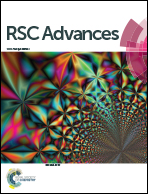Titanium incorporated with UiO-66(Zr)-type Metal–Organic Framework (MOF) for photocatalytic application
Abstract
A UiO-66-type metal–organic framework (MOF) fabricated with titanium was successfully prepared via a facial modified post-grafting method. The as-prepared samples were characterized by X-ray photoelectron spectroscopy (XPS), X-ray diffraction (XRD), transmission electron microscopy (TEM), scanning electron microscopy (SEM), ultraviolet-visible adsorption spectroscopy (UV-vis), and photoluminescence spectroscopy (PL) techniques. The introduction of titanium enhanced the optical properties of UiO-66 via the formation of oxo-bridged hetero-Zr–Ti clusters, but led to a sacrifice in crystallinity. The removal of methylene blue (MB) over these samples could be attributed to the dual function of the adsorption and photo-degradation mechanisms. The highest MB removal efficiency of 87.1% was achieved over UiO-66(1.25Ti) under simulated sun-light irradiation.

- This article is part of the themed collection: Zeolites and 3D Porous Solids

 Please wait while we load your content...
Please wait while we load your content...